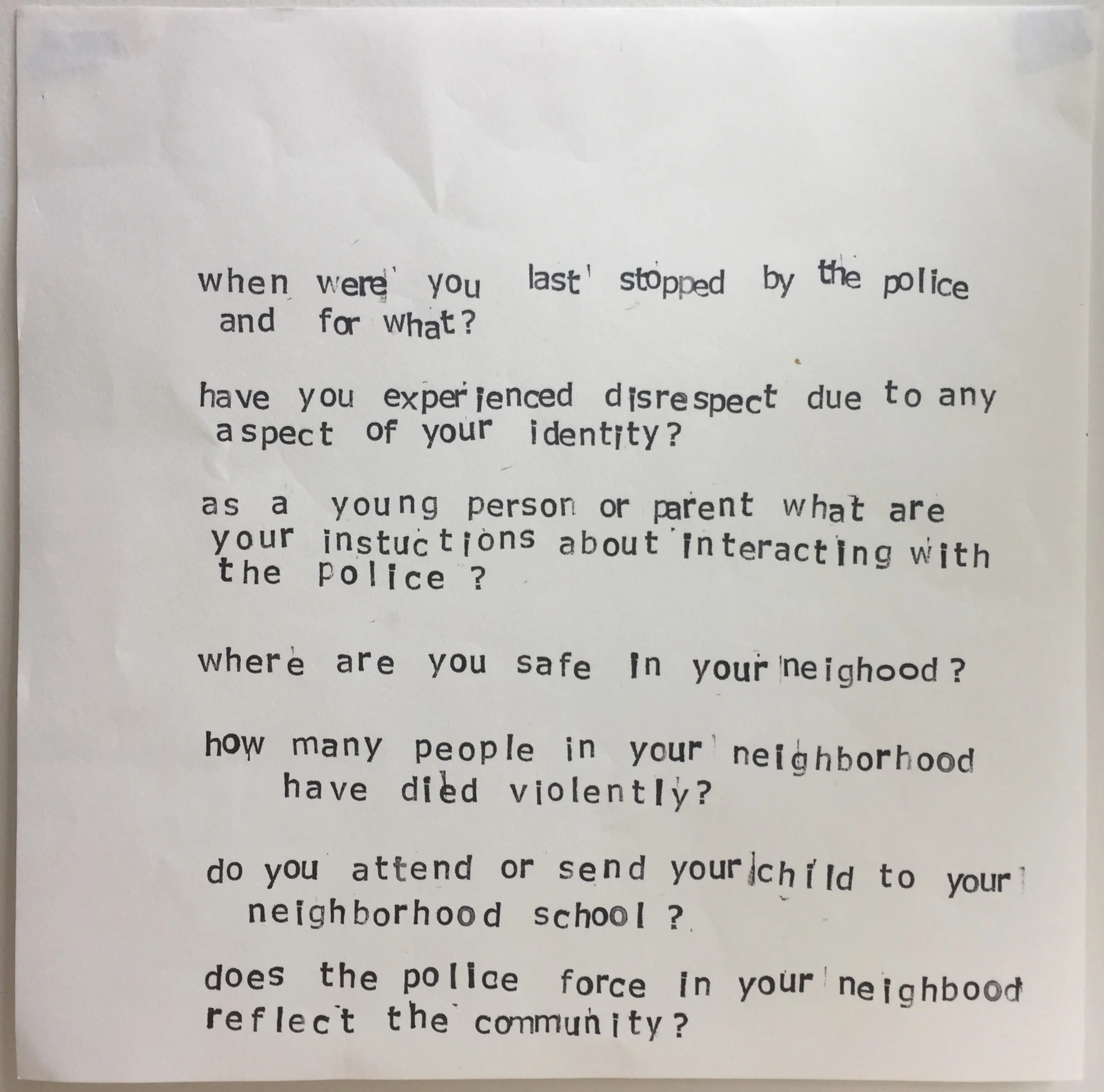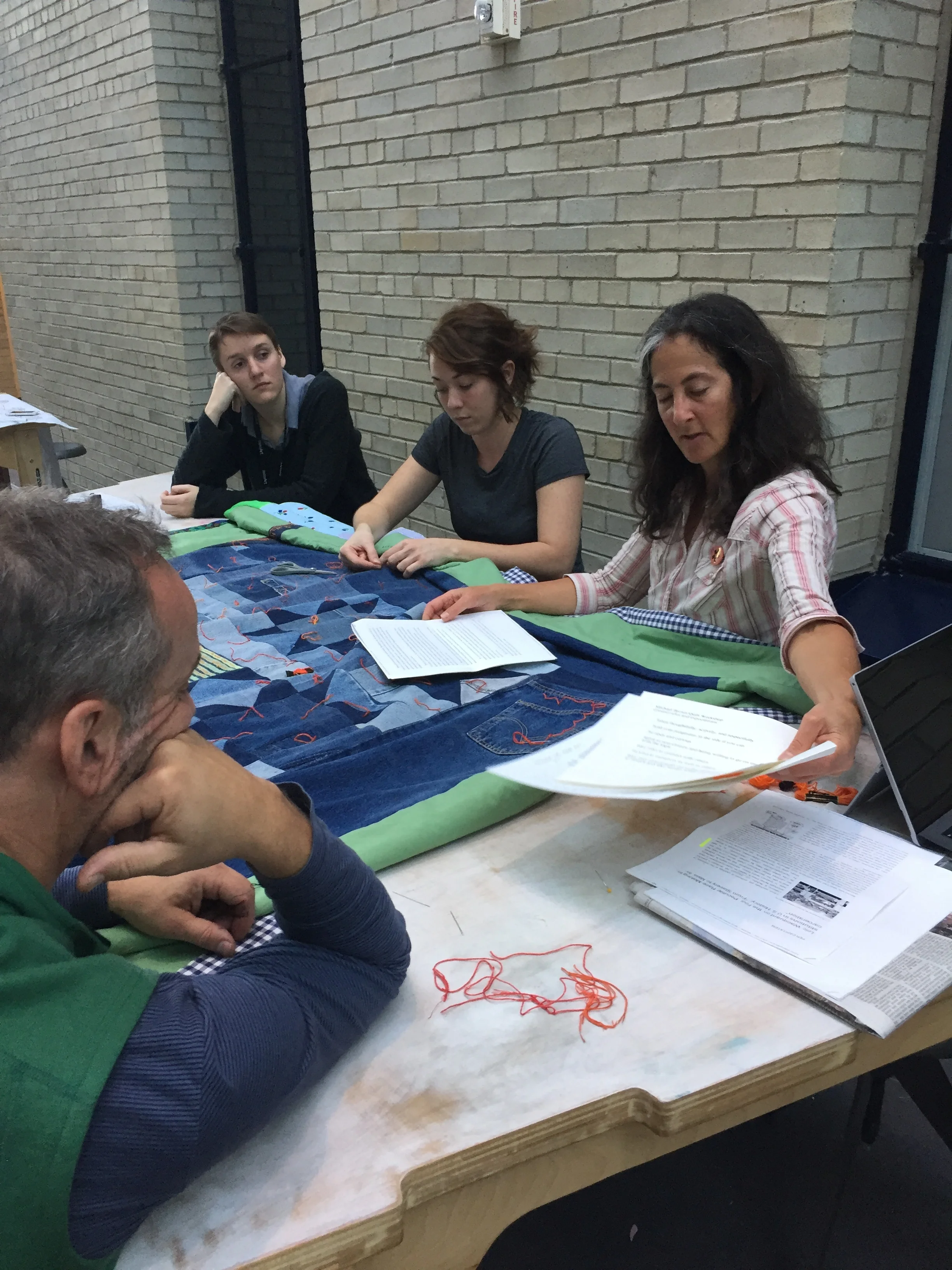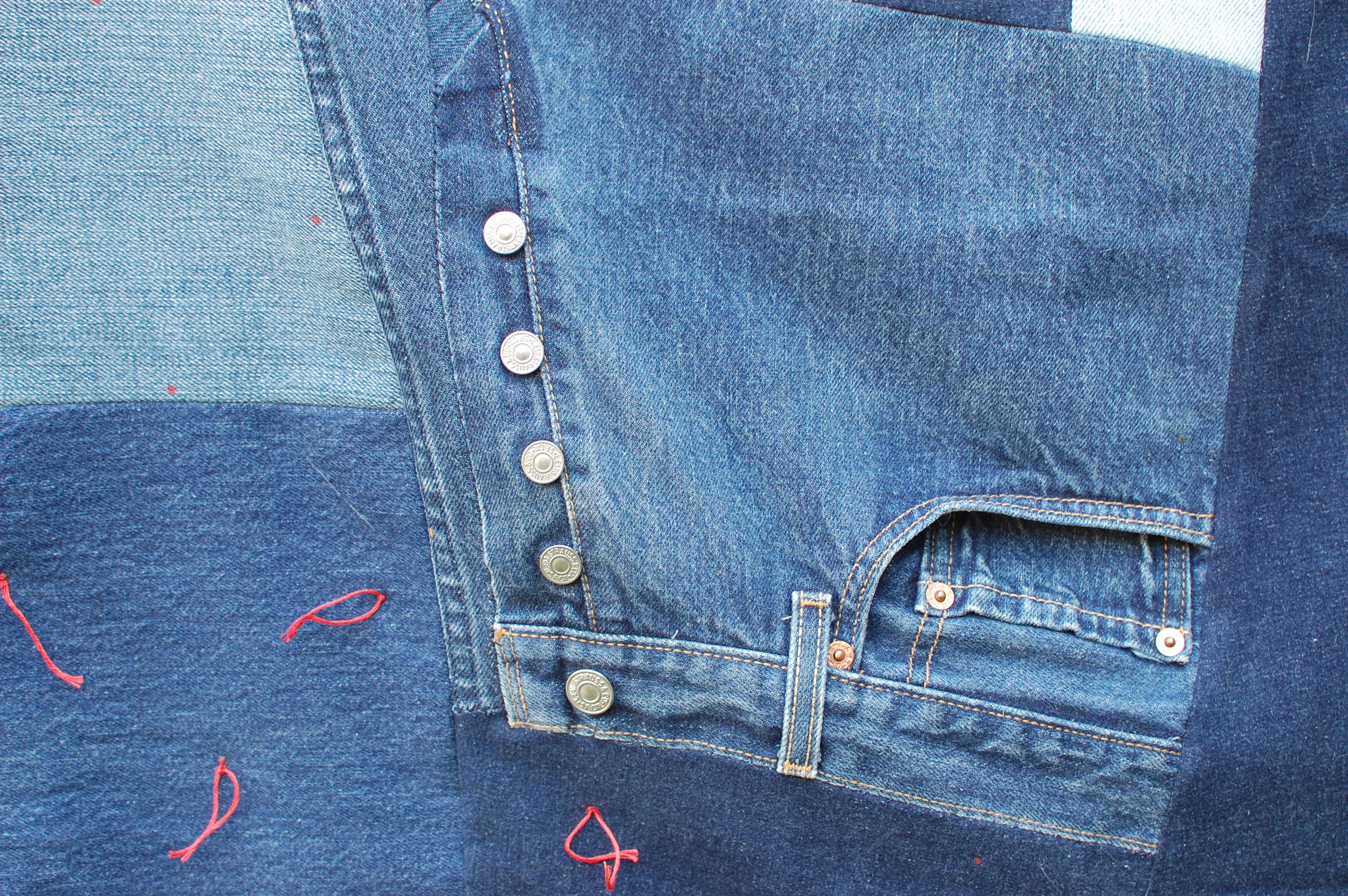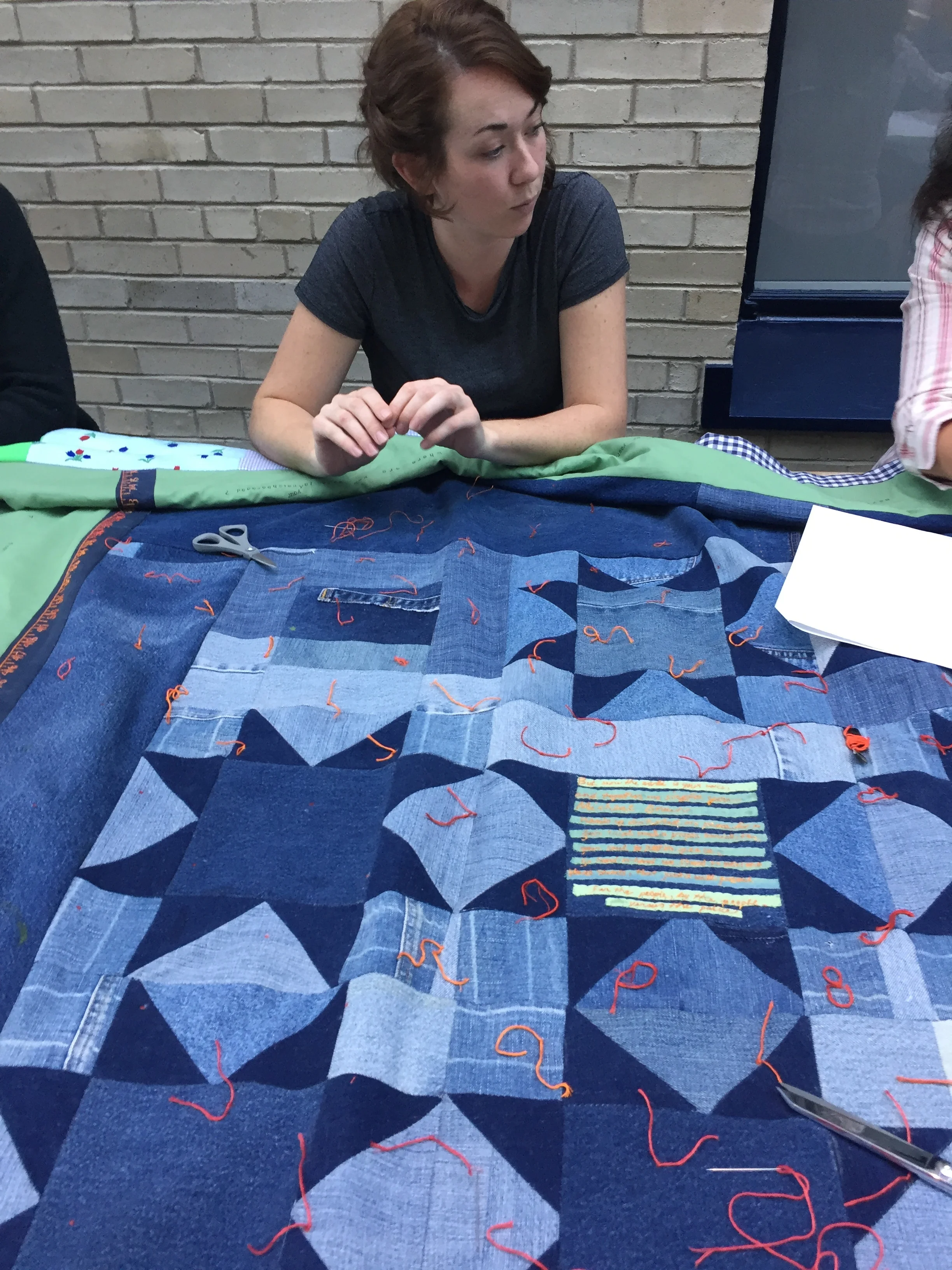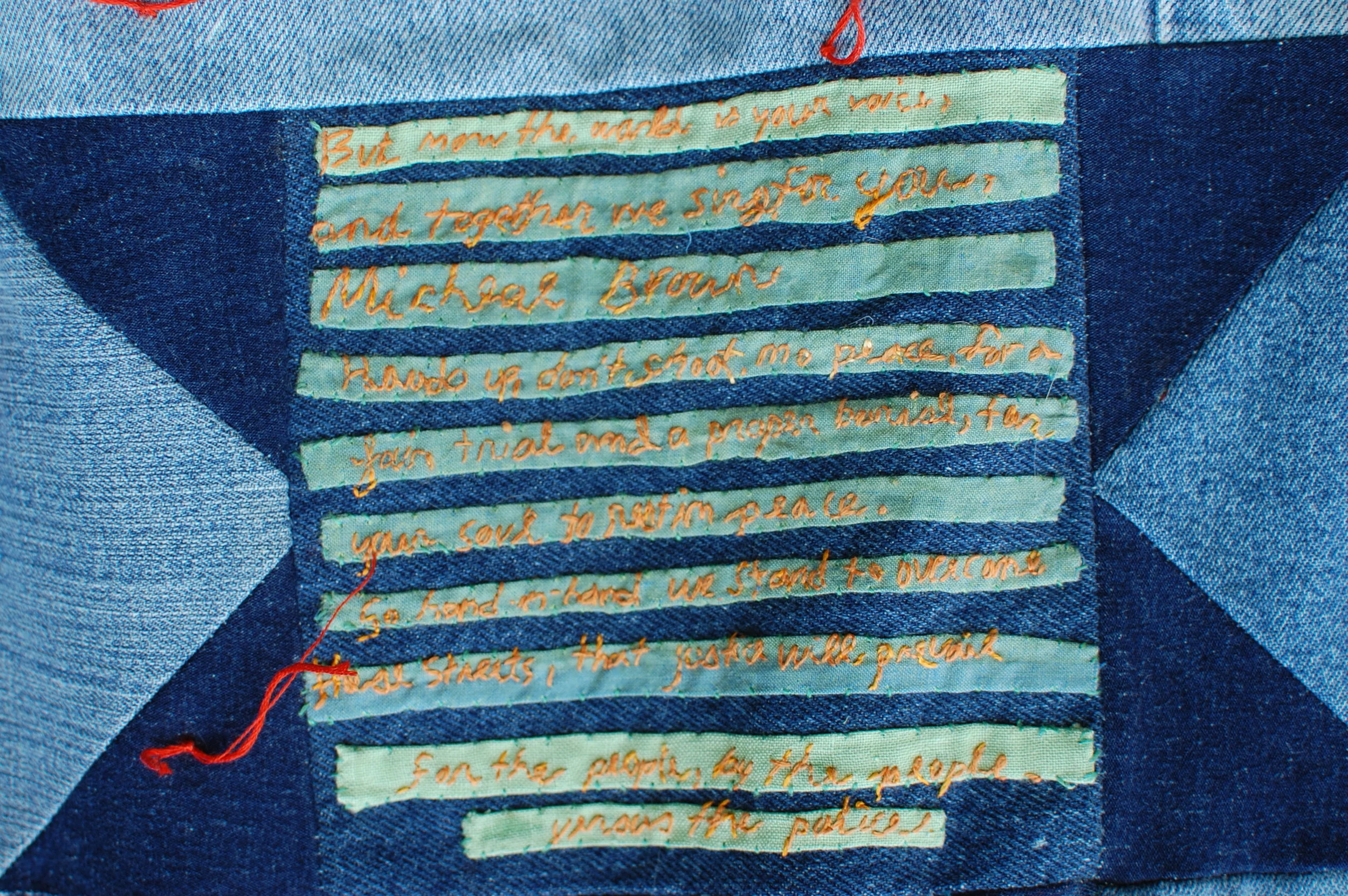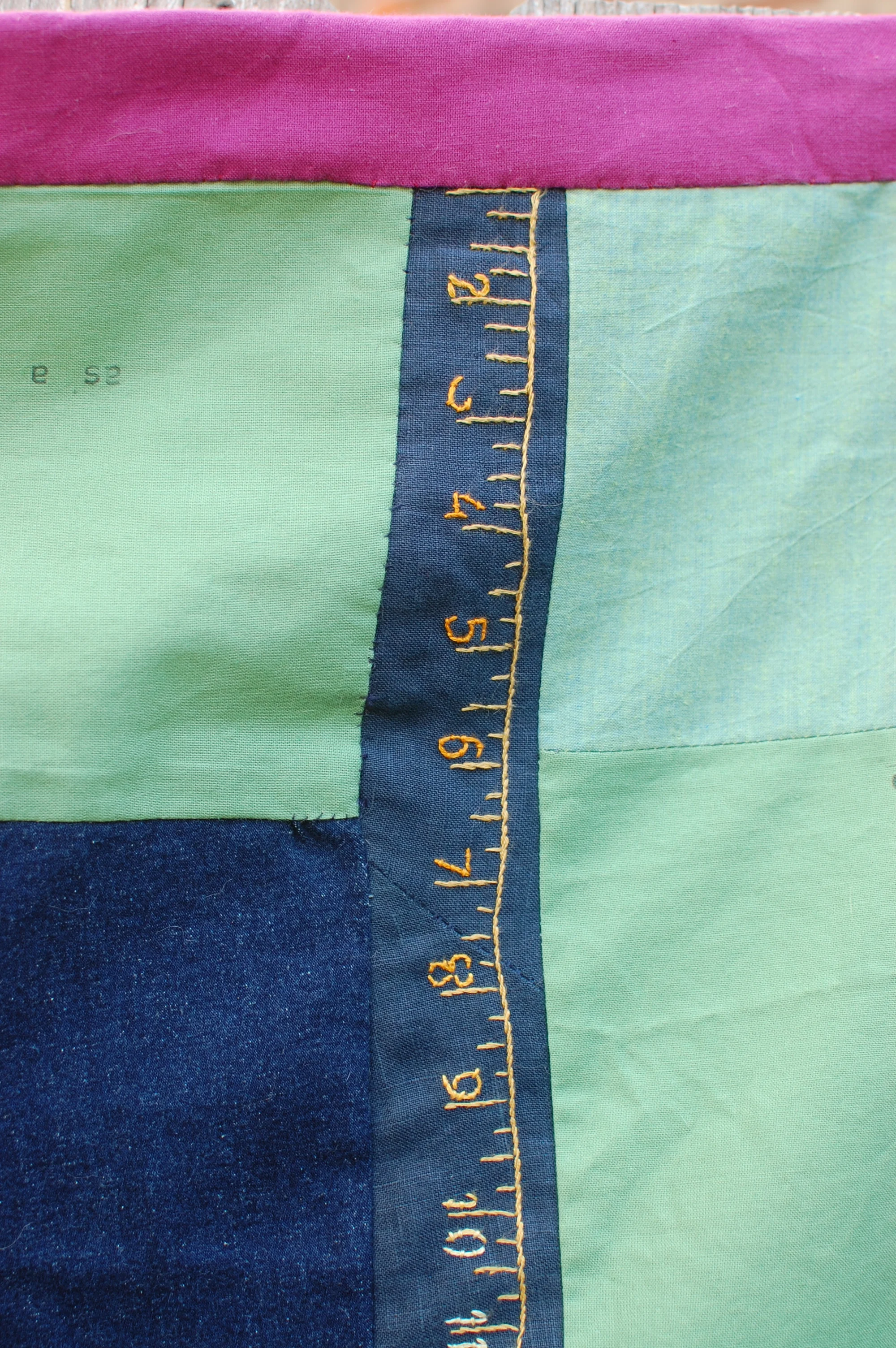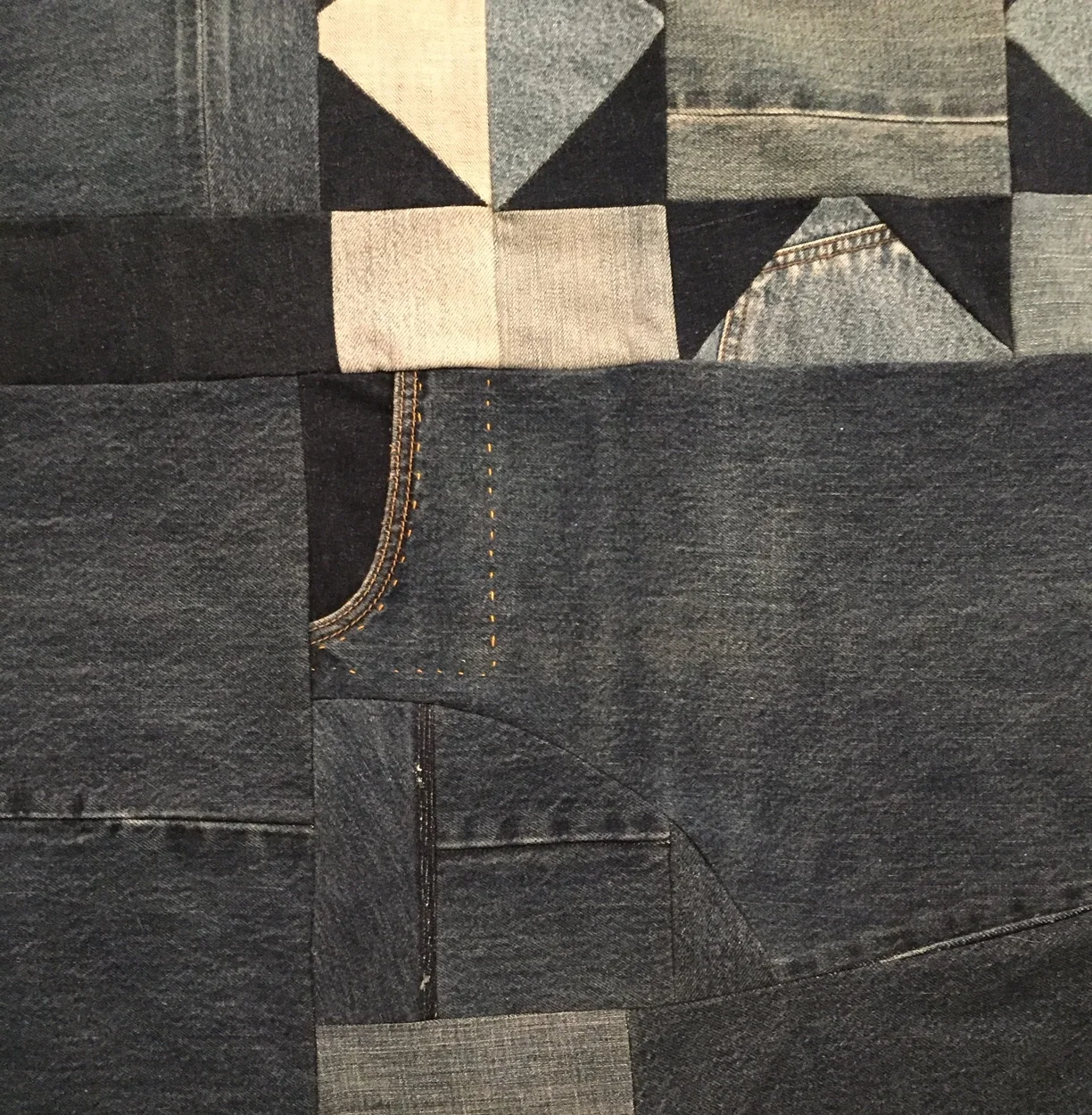Michael Brown Quilt
This quilt was created in memoriam to Michael Brown, and refers to an Abolitionist cradle quilt sewn in 1836 which was sold to benefit the Boston Female Anti-Slavery Society. Proceeds from the sale of this quilt will benefit the Organization Philadelphia Coalition for R.E.A.L. Justice and its general organizing efforts, which confront the context of pervasive racism and white privilege that supports police violence.
The design of this quilt is based on the patchwork star design of the 1836 baby quilt, and uses text as does its model. The center patch of the 1836 quilt contains a poem whose tone grates on contemporary ears:
Mother! when around your child
You clasp your arms in love,
And when with grateful joy you raise
Your eyes to God above,
Think of the negro mother, when
Her child is torn away,
Sold for a little slave, — oh then
For the poor mother pray!
It is important to remember that in many ways our current society at large is more racially divided than the small but effective abolitionist movement of 150 years ago. The delicate calicos and finely inked cursive of the 1836 quilt are rendered here in rough denim and equally coarse embroidery, as a comment on the class and gender restrictions that shaped women’s practice of needlework in the 1800s, and as a requiem to the esthetics, syntax, and fine handwork that have been lost as our society has evolved. The Abolitionist quilt is attributed to Lydia Maria Child, who wrote of its making, “It was really a relief to my mind to be doing something for an innocent little baby in these dreadful times." She reported that the quilt sold for $5, the equivalent of between $100 and $500 in today’s dollars. We chose to honor Lydia’s quilt to draw a parallel between the limitations of Victorian gender roles and rigid class oppression, and current strictures of white privilege and systemic racism which keep people separated and demobilized. Women activists have always worked against their limited societal roles to address injustice, and we place ourselves in continuity with the Abolitionist quilters who used the materials and means at their disposal to make change.
http://civilwarquilts.blogspot.com/2014/12/cradle-quilt-from-historic-new-england.html
http://hsp.org/sites/default/files/legacy_files/migrated/theliberator.pdf

